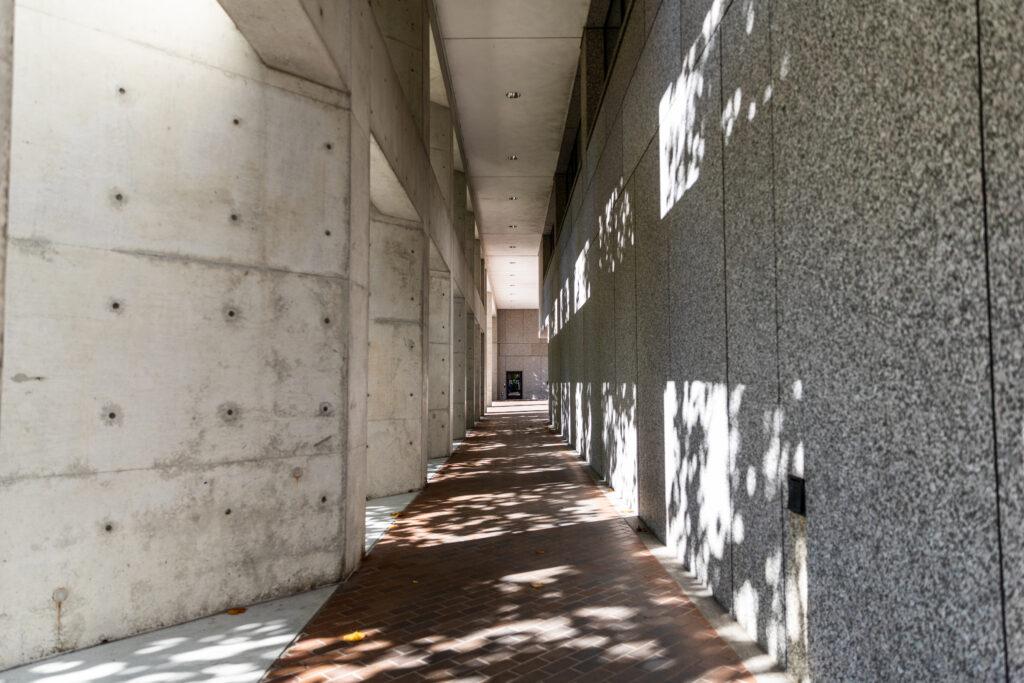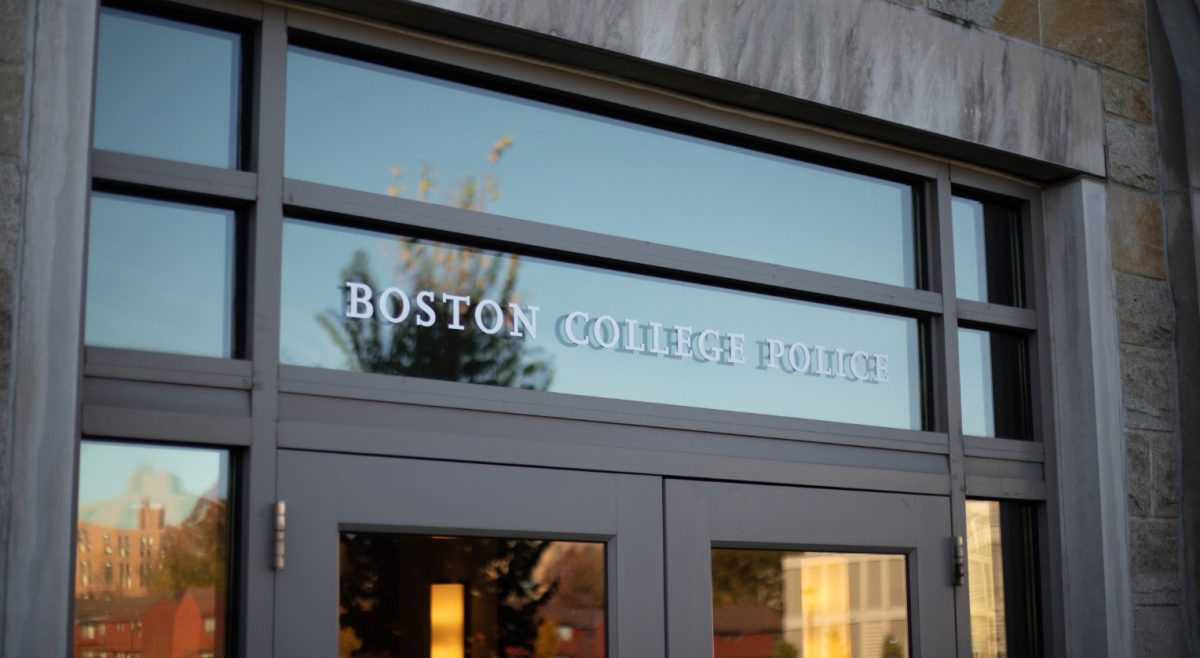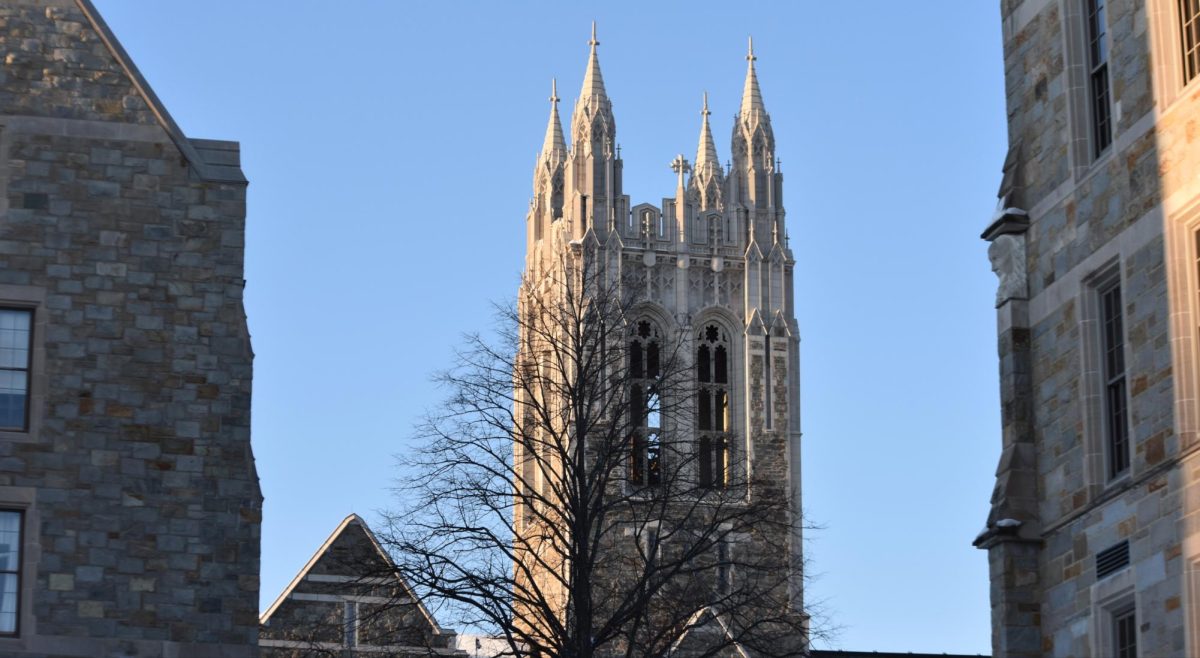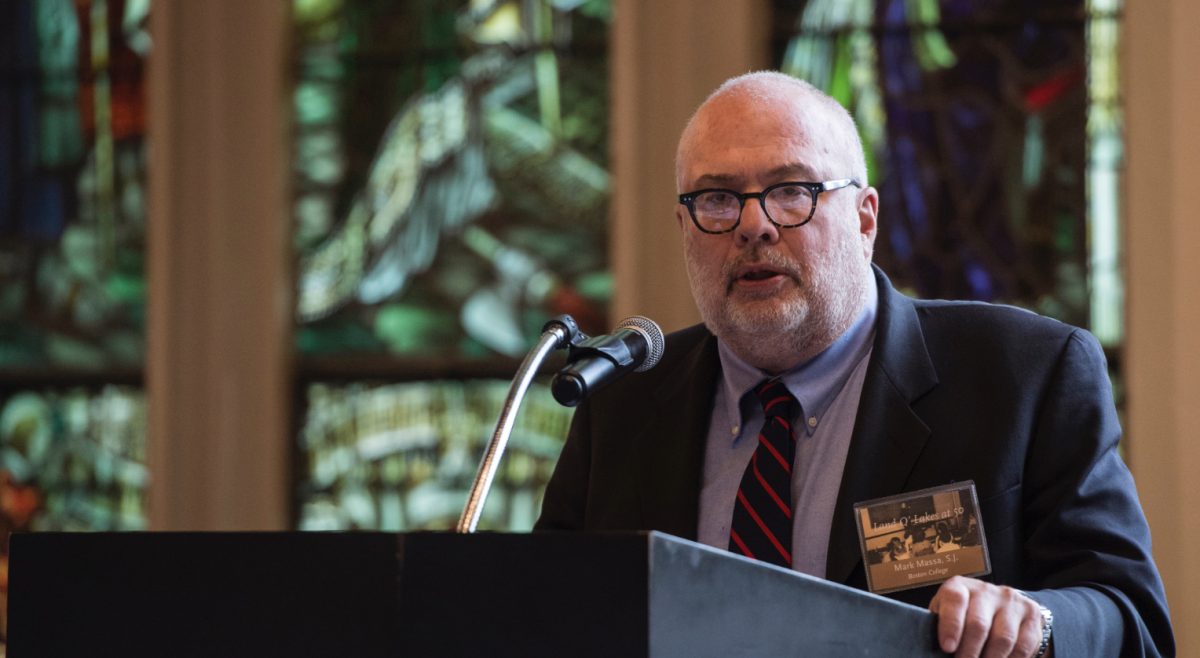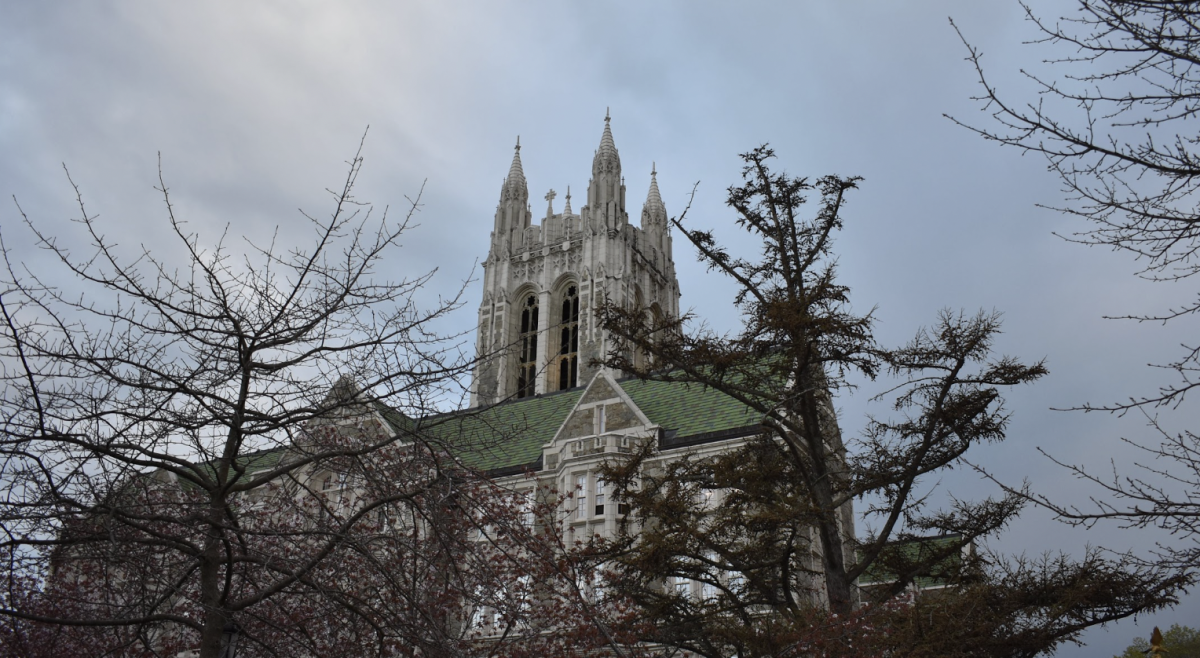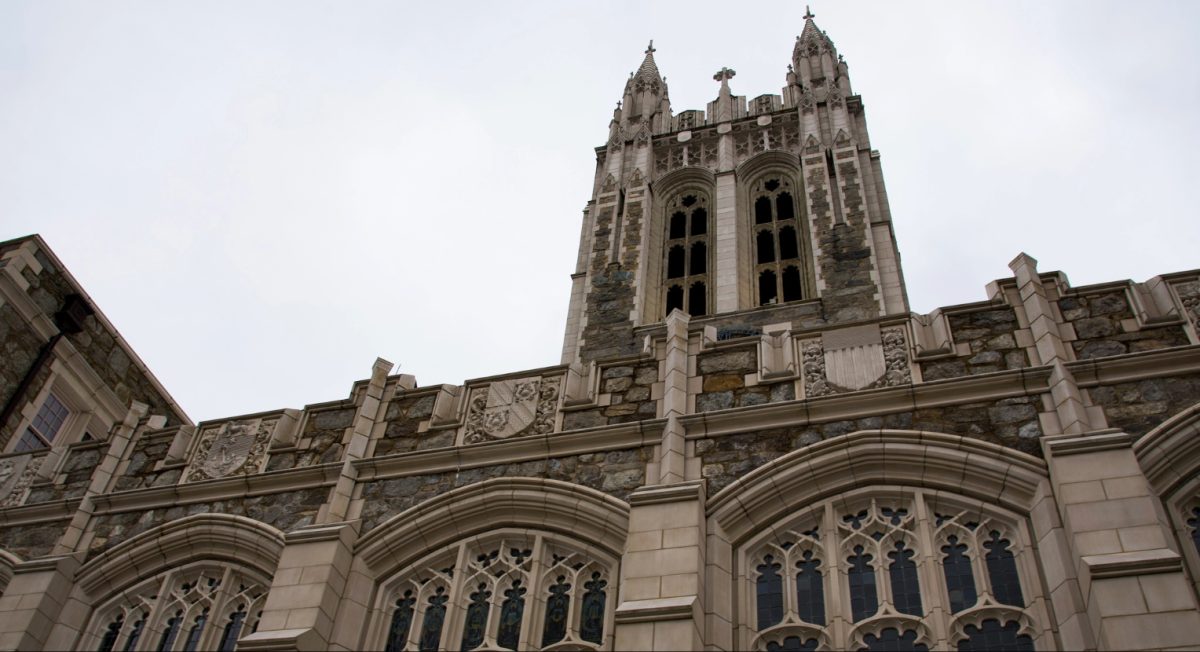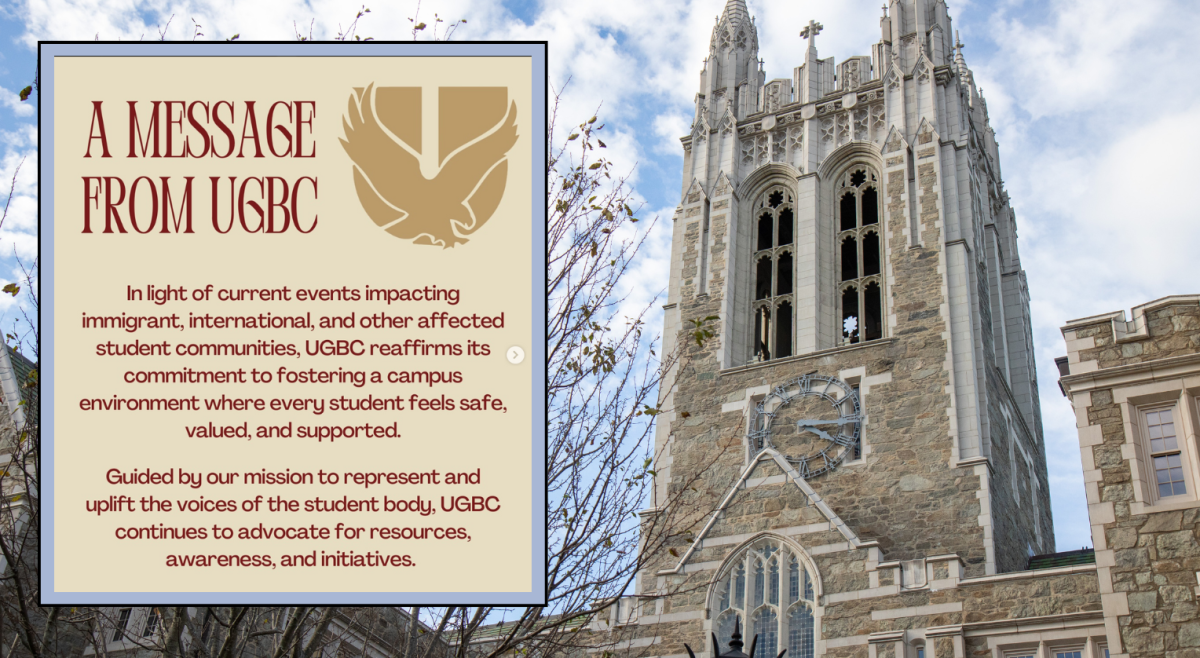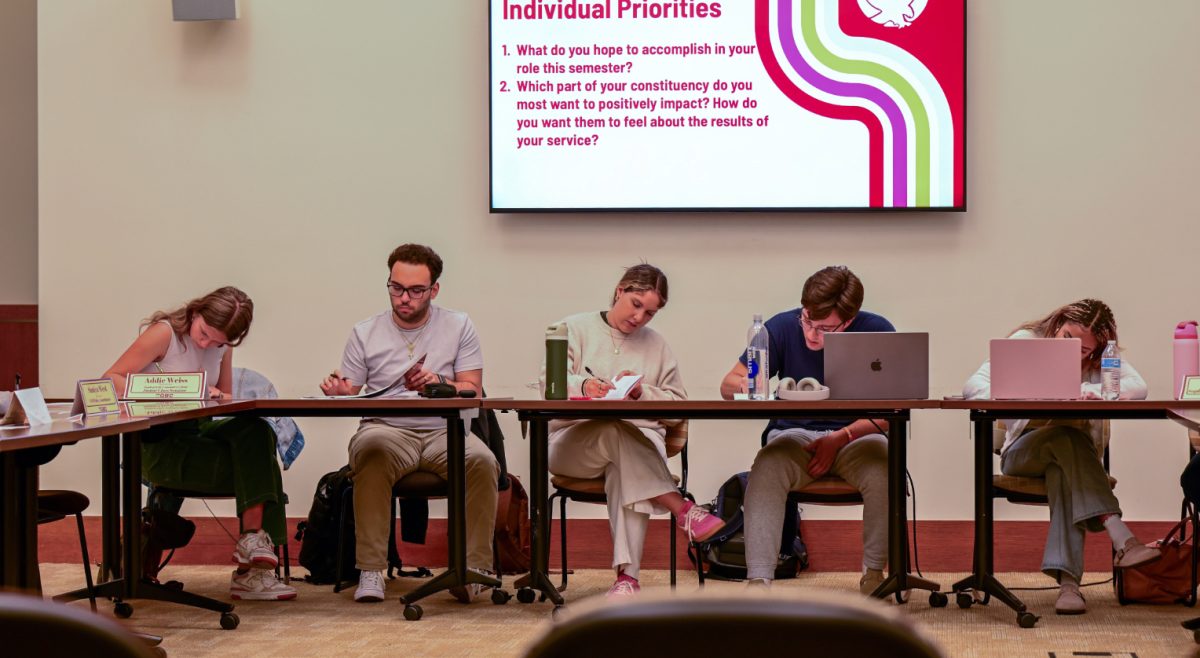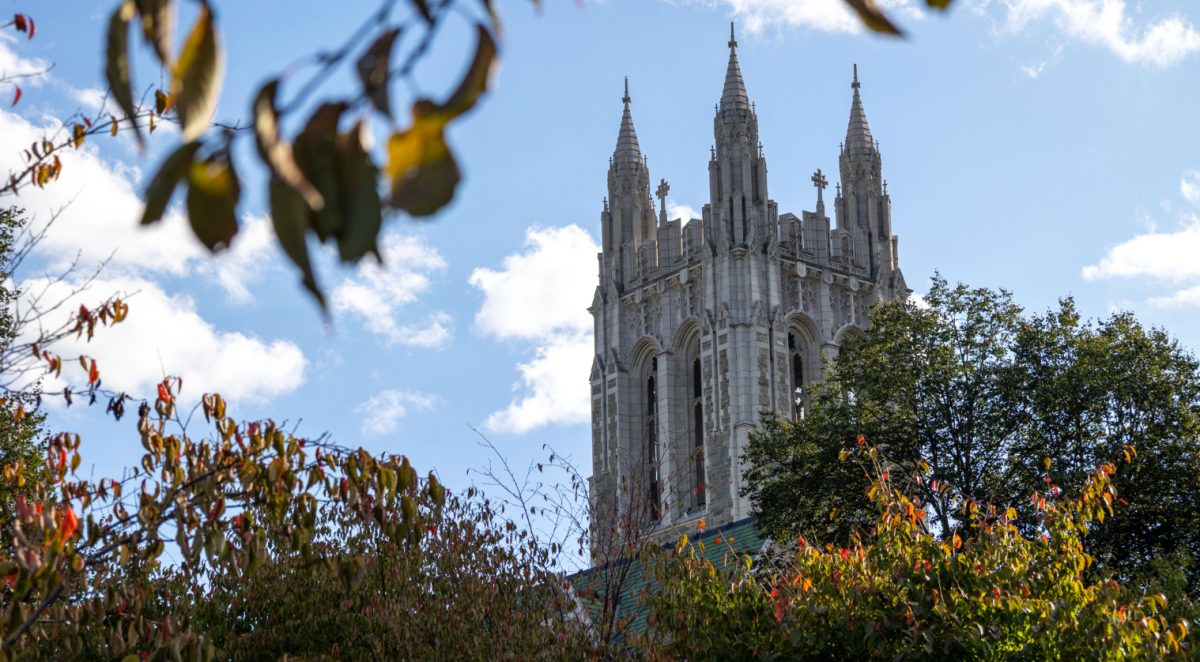Upon entering O’Neill Library, visitors are confronted with one of the library’s newest additions: a neon green sign displaying its current occupancy. BC Libraries, a staple in students’ academic lives, were uniquely challenged by the pandemic, struggling to constantly update and shift its policies in order to comply with University, state, and federal regulations.
From coming up with remote schedules for student workers in March to creating a seating plan for students’ return to campus, librarians and staffers have been facing hurdle after hurdle for the past seven months.
“That’s just the nature of this,” Scott Britton, associate librarian for public services, said. “Everything was on hold until we got direction from the state or from the library or from BC and then we scramble to get things done and that’s just the way things have been since March.”
When the University halted in-person classes in March and sent students home, BC Libraries awaited instructions from the University and from the state of Massachusetts regarding if and how the libraries should remain open. According to Britton, the University encouraged them in March to remain as open as possible.
“A lot of the work was just figuring out what we’re doing—as far as are the doors open, how do we keep staff safe, what do we need to do—because there are so many unanswered questions,” Britton said.
One of the biggest problems BC Libraries faced was how to manage its student workers—according to Britton, BC Libraries hires more than 200 student workers across all of its libraries. When students were sent home, it was obvious that there needed to be a major shift in student workers’ schedules.
“How do you turn your workforce into a workforce that is flexible enough that you can reassign them to do tasks that can be done remotely?,” Rodrigo Castro, head librarian for access services, said.
One of the first major initiatives from BC Libraries was the creation of a curbside pickup program, which consisted of a book cart from which patrons—including students who remained on campus, graduate students, and professors—could pick up books they checked out online, which were placed in plastic bags with their names on them.
Over the summer, Britton said BC Libraries worked to create a seating plan that would follow three policies the state required: students need to be seated 6 feet away from each other, the library can have no more than 40 percent of its normal occupancy, and there can be no more than eight people per 1000 square feet.
“So looking at those three different regulations, we needed to come up with a seating plan. … It was lots of looking at tape measures and running around and, unfortunately, our furniture isn’t 7 feet long, which would allow people to sit at a table 6 feet apart,” Britton said. “So a lot of chairs were removed because of one reason or another.”
O’Neill Library currently holds 32 percent of its normal occupancy, Britton said. The libraries have seen relatively low numbers of students so far, Britton said, with O’Neill Library never surpassing 75 percent it’s already limited occupancy.
Librarians had to plan out various social-distancing procedures, including planning the traffic routes students would follow in the buildings, the installation of plexiglass partitions, and a process quarantining books before returning them to the shelves.
“It took us months to prepare physical spaces and to have those discussions about what our seating capacity should be, what the traffic route should be, what are the services that need to be relocated,” Castro said.
In early August, the librarians decided to open the doors a few weeks earlier than usual and let patrons in via a reservation system. The goal, Castro said, was to see how people acted with the new regulations and whether they were mindful of new policies.
“We wanted to see how people behave when they come to the libraries, how they move,” Castro said. “We wanted to test the whole idea of reopening to the public. So I think in that sense we were very thoughtful and I think it was a success as a process.”
Before classes resumed in late August, though, the librarians ran into a number of issues. On Aug. 24, a week before classes were scheduled to begin, BC Libraries was informed that the University wanted the libraries to scan each patron entering the buildings for the green check-mark on BC’s COVID-19 self-assessment, which the libraries had not previously planned for.
“That required that we had staff at the desk that we don’t normally have in both locations,” Britton said about O’Neill Library. “We had to close a door because we wouldn’t have enough staff to cover three doors. So that was a big deal.”
The next day, the library staff found out that the state of Massachusetts required libraries to have visitor logs recording who enters the building and at what time, Britton said. The following day, the University informed BC Libraries that they needed to create classroom spaces for students who couldn’t attend their virtual classes in their dorms.
“This has been very challenging but there are also many opportunities,” Castro said. “We think that some of the things that we have done and implemented and some of the conversations we have had will help shape our services in the future.”
Featured Image by Jess Rivilis / Heights Editor

